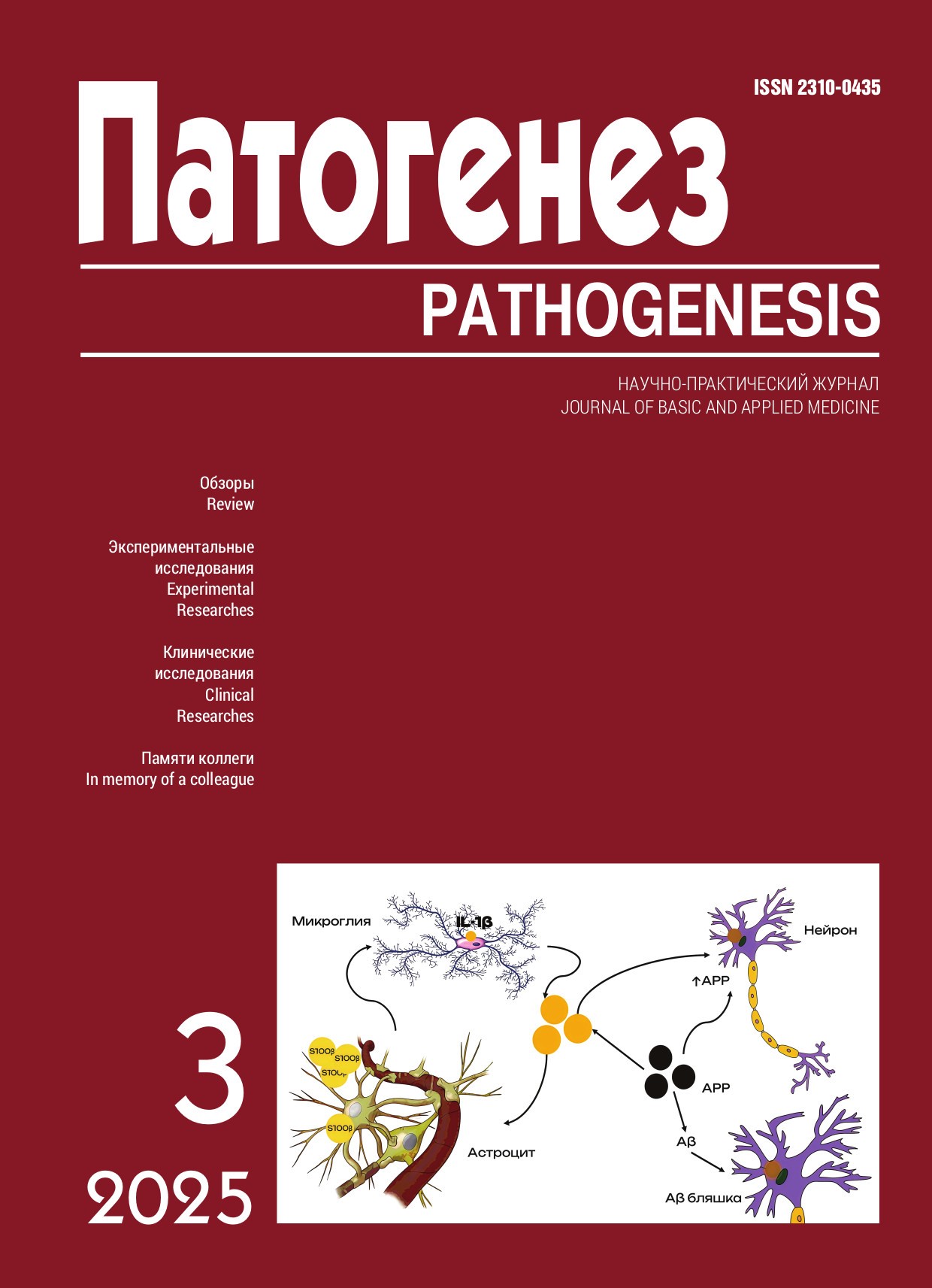Pathogenetic significance of biomarkers of acute kidney damage and their relationship with morphological changes in thermal skin burns
Abstract
Burn injuries cause a significant number of deaths each year due to their immediate consequences and complications. Despite the focus on organ-specific pathology in burn disease, acute kidney injury (AKI) is often underestimated and undiagnosed in clinical practice. To improve early diagnosis and, consequently, outcomes, the identification of new biomarkers for AKI is essential. The key area of research is to study the relationship between the patterns of renal damage localization and the level of biomarkers, which will allow for the development of more effective algorithms for early diagnosis and risk stratification of AKI in patients with burn injuries.
The purpose of this to investigate the morphological and morphometric changes in renal tissue, to assess the dynamics and to identify the relationship between the concentration of biomarkers of ARF and the obtained histological data in patients who died from severe thermal skin burns at different stages of burn disease.
Materials and methods. The study included 34 patients who died from grade I-III thermal skin burns with an area of skin damage of more than 25%, including at least 15% deep burns. The concentration of biomarkers was analyzed using a multiplex analysis on a flow cytometer. The blocks were cut using a HM325 rotary microtome. The micropreparations were examined using an Olympus CX21 microscope, and microphotography was performed using a Leica DM250 microscope.
Results. It has been established that in patients who died from burn injuries, the levels of biomarkers of acute kidney damage differed significantly from those in the control group. Histological examination of the renal tissue revealed that during the course of burn disease, tubular necrosis developed primarily. Three significant relationships between the level of a biomarker and topical damage have been identified: (1) the level of lipocalin in renal tissue is related to the lumen of the Schimansky-Bowman capsule, (2) the height of the renal tubular epithelium correlates with the level of beta-2-microglobulin, and (3) the diameter of the tubules depends on the level of uromodulin in the urine.
Conclusions. The established pathogenetic relationships between the levels of biomarkers, morphometric parameters of the renal tubules, and the glomerular apparatus confirm the presence of acute kidney injury in patients with thermal burns.




